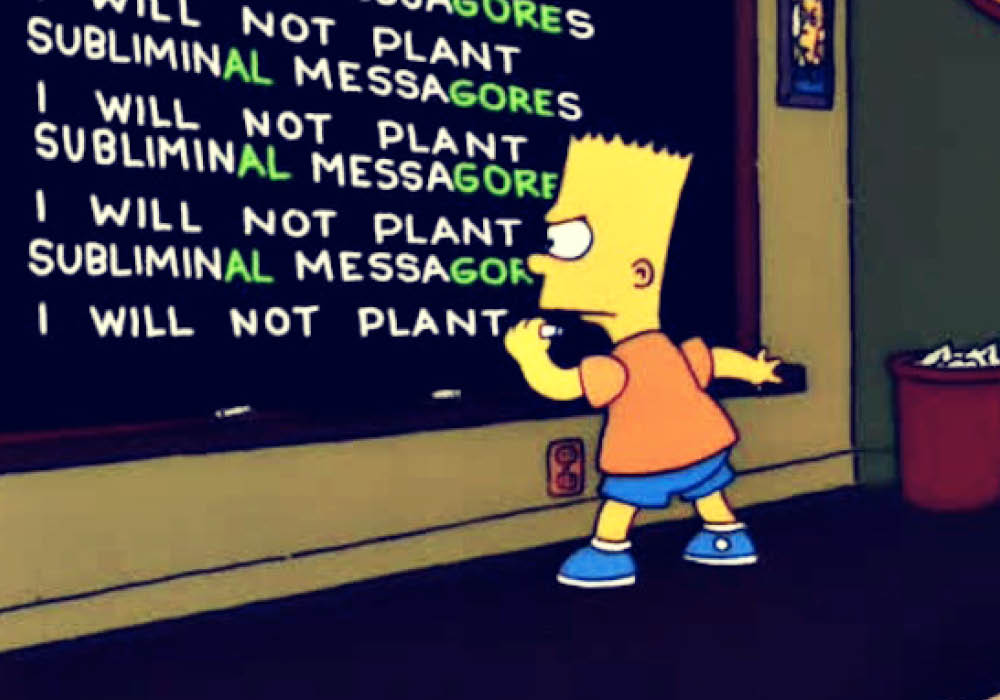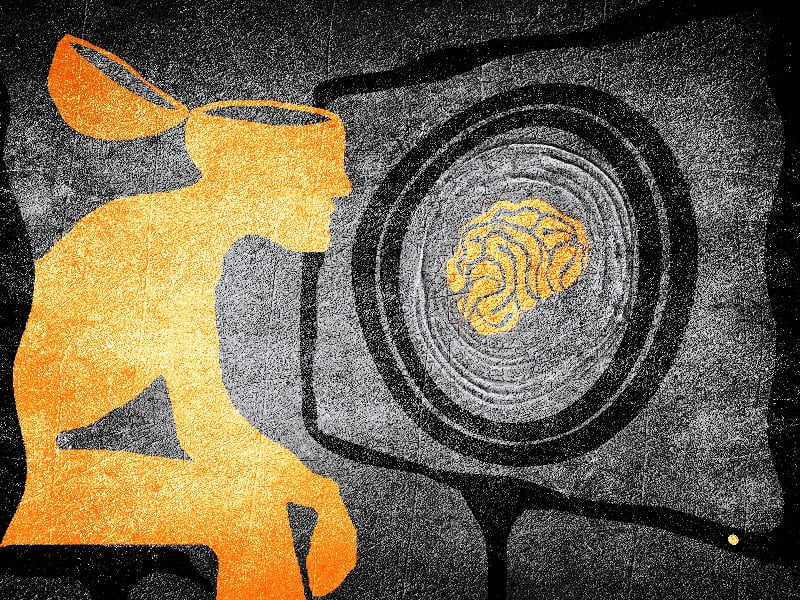Rumors about the 25th frame, the secret weapon of advertisers and propagandists, pass from generation to generation. An image that affects the subconscious while a person serenely looks at the screen - such a picture looks quite realistic in the age of high technology. We checked whether it actually works.
The last peak in popularity of the 25th frame theory occurred in the 90s and early 2000s. In Russia, mass media like "Komsomolskaya Pravda". But literature did not lag behind. Anatoly Greshnevikov in the book “Information War: about the secret plans of Westerners, secret weapons and new technologies for destroying Russia” wrote:
“On a computer screen, just like on a TV screen, frames change at a rate of 24 frames per second. The “666” computer virus displays a specially selected color combination on the screen in the 25th frame, plunging a person into a kind of hypnotic trance. After 25–30 frames the picture changes. Everything is calculated so that the subconscious perception of a new pattern causes a change in cardiac activity - the rhythm and force of contractions. As a result, blood pressure in the pulmonary circulation either rises sharply or falls sharply. And so on until the blood vessels of the brain can’t stand it.”
And the Kommersant newspaper in 2000 held survey among television workers on a burning topic. Here is how TV presenter Dmitry Dibrov spoke:
“According to textbooks, there is a “25th frame effect”, and this is nothing more than manipulation of consciousness. I recently bought a French textbook on CD-ROM using frame 25 - I want to learn French quickly.”
Lidia Volokhova - not just anyone, but an editor at Mosfilm, that is, a person related to video footage at the highest level - answered the question about the existence of the technology:
“In principle, I believe it. And I think that there is a point in an official ban. Moreover, many small frames are now used, which are captured by the eye and perceived by the conscious mind, not to mention the subconscious. I tried to do this, hooliganism, of course, but very interesting. I looked to see if anything would be visible and remembered. I can’t say that there was an effect, but this is probably because I did it myself and knew what was there. But I didn’t dare check it on anyone else.”

On this wave, Russian legislators actually adopted the Law “On Advertising” No. 38-FZ of March 13, 2006, which states:
“The use in radio, television, video, audio and film products or other products and the distribution of hidden advertising, that is, advertising that has an impact on their consciousness that is not realized by advertising consumers, including such an impact through the use of special video inserts (double sound recording) and other means, is not allowed.”
Thus, quite recently, in the 21st century, the use of 25th frame technology in the Russian Federation was prohibited. Now let's turn to the origins of the whole story.
In 1957, American marketer James Vickery publicly announced an experiment he conducted in movie theaters in Fort Lee (New Jersey). While a film called “Picnic” was playing on the screen, the second projector showed hidden advertisements for popcorn and Coca-Cola in short breaks between frames. According to Vickery, as a result, sales of soft drinks increased by 17%, and popcorn by 50%. After the sensational message, Vickery acquired a patent and opened an advertising agency specializing in this technology.
Vickery's statement caused a great resonance; the marketer began to be asked to conduct another experiment. However, not a single transparent application of the technology has produced the desired result. When the Advertising Research Foundation demanded that Vickery provide detailed data from the first, “successful” experiment, he refused. The arrival of a student in Fort Lee who was writing a course paper on this topic added fuel to the fire. Student found outthat the local cinema simply could not accommodate the number of spectators mentioned by the marketer, and the administration did not know about any experiments. Some sources even claimthat after a series of failures, Vickery disappeared with millions of dollars in royalties from various individuals. This information is not confirmed, but it is reliably known that in 1962 an American gave interview, where, in fact, he admitted that the effect was a soap bubble, inflated from a small and unreliable experiment.
Nevertheless, the case of James Vickery lives on. And not only in Russia, where, according to recent polls, 68.2% of respondents believe in the 25th frame effect. Subliminal advertising is also prohibited in the West, for example in the UK. From time to time, various experiments are carried out (not only video, but also audio) designed to prove the effectiveness of this family of methods. But they either fail or are based on an unrepresentative sample.
Yes, it has been established that slow music in a supermarket subconsciously makes a person move slower and sales increase. And no one has canceled the messages inside static advertising.

Moreover, proventhat certain areas of the brain can be stimulated at the subconscious level. However, no one yet knows how to make this process manageable and targeted. So the legislative acts of a number of countries can be considered a safety net - after all, we are talking about our health. Specifically, the effect of the 25th frame is quite convincing, but a hoax.
Fake
Read on topic:
1. http://www.repiev.ru/articles/25frame.htm
2. https://www.ijcr.eu/articole/330_07%20Maria%20FLOREA.pdf
3. https://www.sciencedirect.com/science/article/pii/S1053811911011529?via%3Dihub
4. https://en.wikipedia.org/wiki/Subliminal_stimuli
5. https://muse.jhu.edu/article/193862
6. https://www.wipo.int/edocs/lexdocs/laws/ru/md/md103ru.pdf
If you find a spelling or grammatical error, please let us know by highlighting the error text and clicking Ctrl+Enter.







